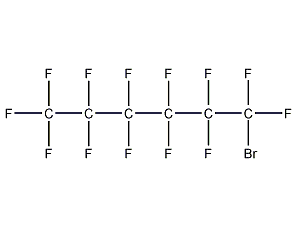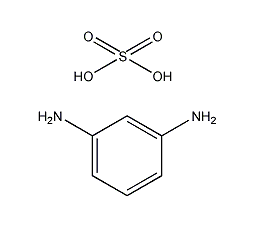Perfluorohexyl bromide


Structural formula
| Business number | 04A0 |
|---|---|
| Molecular formula | C6BrF13 |
| Molecular weight | 398.95 |
| label |
1-bromoperfluoroethane, 1-bromoperfluorohexane, PERFLUOROHEXYL BROMIDE, 1-BROMOTRIDECAFLUOROHEXANE, 1-BROMOPERFLUOROHEXANE, 1-bromo-1,1,2,2,3,3,4,4,5,5,6,6,6-tridecafluorohexane, Perfluorohexyl bromide 98%, Perfluorohexylbromide98%, Tridecafluorohexyl Bromide |
Numbering system
CAS number:335-56-8
MDL number:MFCD00042349
EINECS number:206-391-6
RTECS number:None
BRN number:1714896
PubChem ID:None
Physical property data
一 , physical property data
Traits :Not available
Density (g/mL,25/4℃): 1.871
Relative Vapor density (g/mL, air=1):Not available
Melting point (ºC): Not available
Boiling point (ºC, normal pressure):97
Boiling point (ºC, 5.2kPa): Not available
Refraction Rate: 1.3
Flash Point (ºC): 100-101
Optical rotation (º): Not available
Spontaneous combustion Point or ignition temperature (ºC): Not available
Steam Pressure (kPa, 25ºC): Not available
saturated Vapor pressure (kPa, 60ºC): Not available
Burn Heat (KJ/mol):Not available
Critical Temperature (ºC): Not available
Critical Pressure (KPa): Not available
oil and water Log value of the (octanol/water) partition coefficient:Not available
Explosion Upper limit (%, V/V): Not available
Explosion Lower limit (%, V/V): Not available
Dissolve Properties: Not available
Toxicological data�
Two , Toxicological data:
Acute Toxicity:Not available .
Ecological data
Three , Ecological data:
1 , Other harmful effects: This substance may be harmful to the environment, and special treatment should be given to water bodies. Notice.
Molecular structure data
1. Molar refractive index: 39.50
2. Molar volume (m3/mol):211.8
3. isotonic specific volume (90.2K):417.1
4. Surface Tension (dyne/cm):15.0
5. Polarizability(10-24cm3):15.65
Compute chemical data
1. Reference value for hydrophobic parameter calculation (XlogP): 5.6
2. Number of hydrogen bond donors: 0
3. Number of hydrogen bond acceptors: 13
4. Number of rotatable chemical bonds: 4
5. Number of tautomers: none
6. Topological molecule polar surface area 0
7. Number of heavy atoms: 20
8. Surface charge: 0
9. Complexity: 366
10. Number of isotope atoms: 0
11. Determine the number of atomic stereocenters: 0
12. Uncertain number of atomic stereocenters: 0
13. Determine the number of chemical bond stereocenters: 0
14. Number of uncertain chemical bond stereocenters: 0
15. Number of covalent bond units: 1
Properties and stability
None
Storage method
None
Synthesis method
None
Purpose
None









